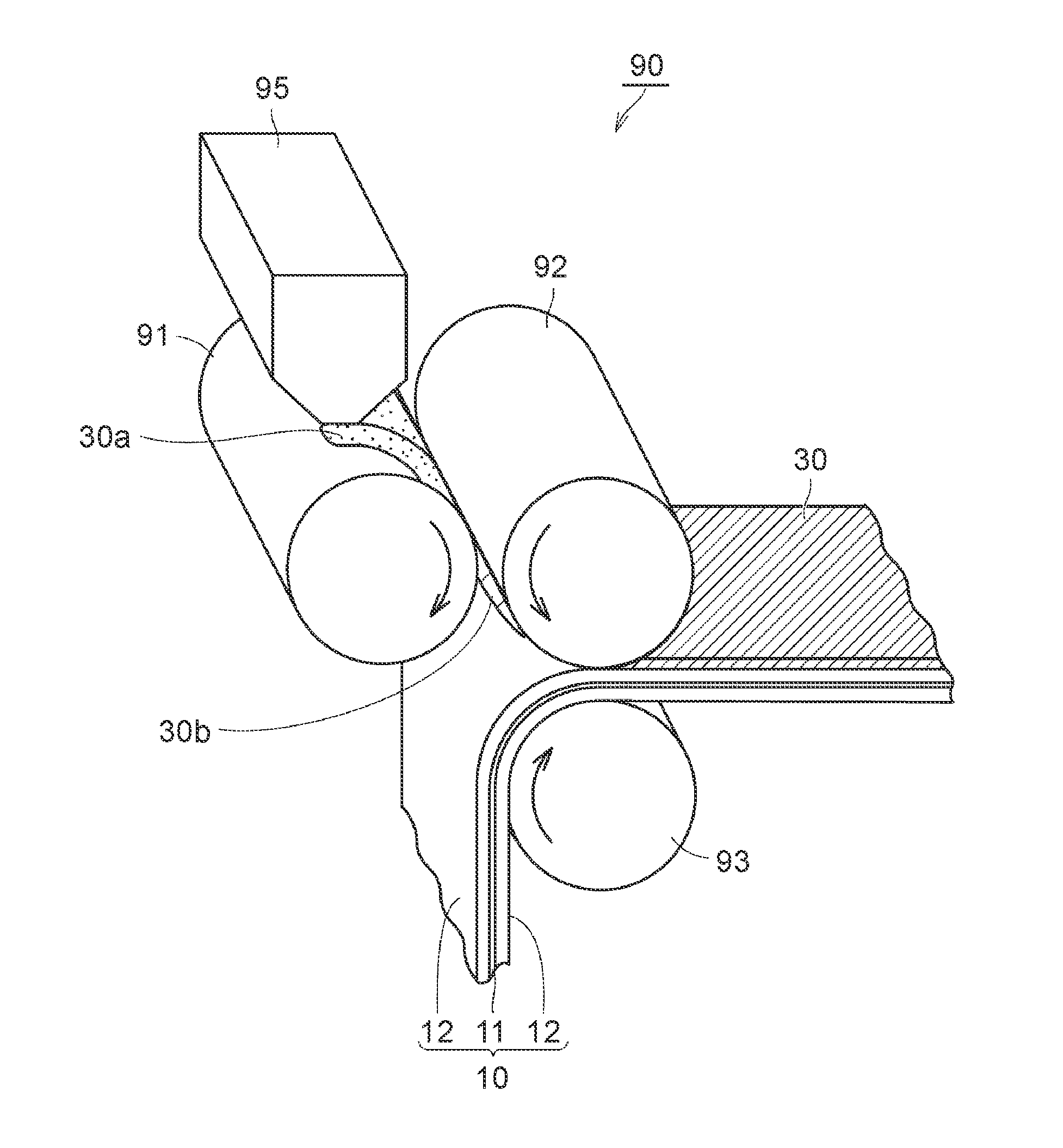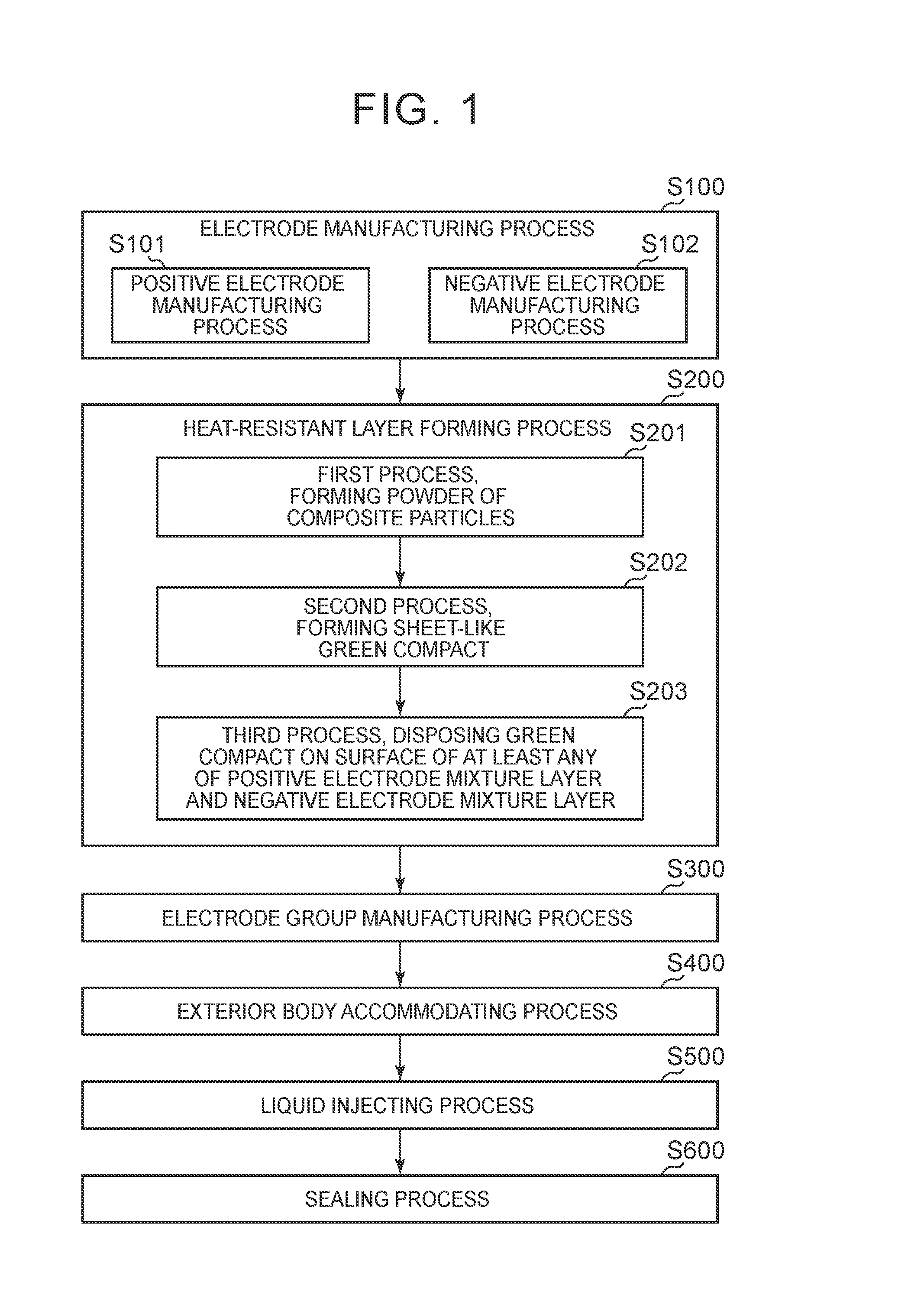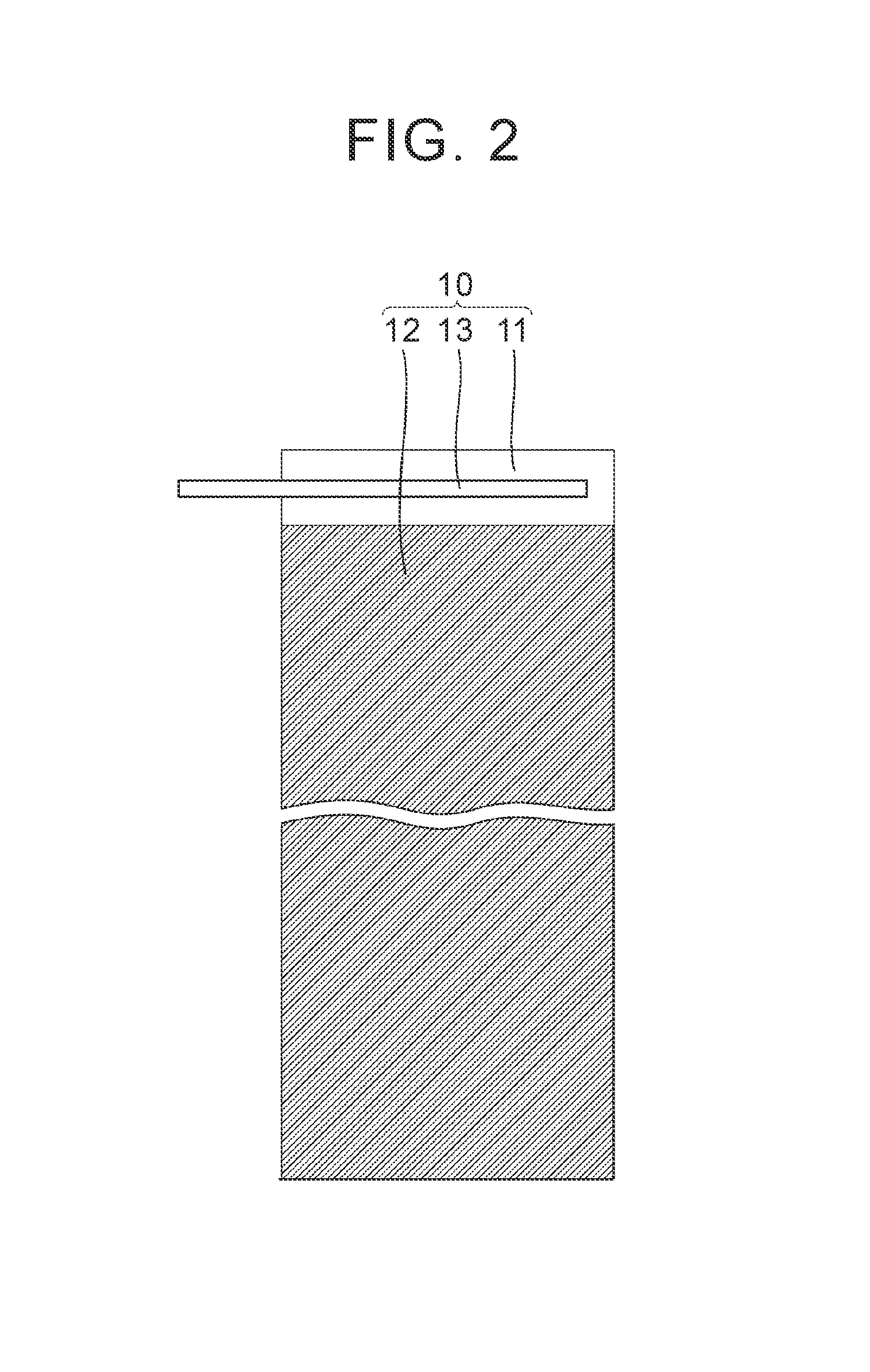Manufacturing method for non-aqueous electrolyte secondary battery
a manufacturing method and technology for secondary batteries, applied in the direction of cell components, final product manufacturing, sustainable manufacturing/processing, etc., can solve the problem of increasing the amount of binder, and achieve the effects of reducing the diffusion resistance of li ions, enhancing the peeling strength of the heat-resistant layer, and sufficient strength
- Summary
- Abstract
- Description
- Claims
- Application Information
AI Technical Summary
Benefits of technology
Problems solved by technology
Method used
Image
Examples
Embodiment Construction
[0023]Hereinafter, an embodiment of the invention (hereinafter, referred to as “this embodiment”) will be described in detail, and this embodiment is not limited thereto.
[0024][Manufacturing Method for Non-Aqueous Electrolyte Secondary Battery]
[0025]FIG. 1 is a flowchart schematically illustrating a manufacturing method for a non-aqueous electrolyte secondary battery according to an embodiment of the invention. As illustrated in FIG. 1, the manufacturing method includes an electrode manufacturing process (S100), a heat-resistant layer forming process (S200), an electrode group manufacturing process (S300), an exterior body accommodating process (S400), a liquid injecting process (S500), and a sealing process (S600). Hereinafter, each process will be described.
[0026][Electrode Manufacturing Process (S100)]
[0027]As illustrated in FIG. 1, the electrode manufacturing process includes a positive electrode manufacturing process (S101), and a negative electrode manufacturing process (S102)...
PUM
| Property | Measurement | Unit |
|---|---|---|
| melting point | aaaaa | aaaaa |
| thickness | aaaaa | aaaaa |
| mass % | aaaaa | aaaaa |
Abstract
Description
Claims
Application Information
 Login to View More
Login to View More - R&D
- Intellectual Property
- Life Sciences
- Materials
- Tech Scout
- Unparalleled Data Quality
- Higher Quality Content
- 60% Fewer Hallucinations
Browse by: Latest US Patents, China's latest patents, Technical Efficacy Thesaurus, Application Domain, Technology Topic, Popular Technical Reports.
© 2025 PatSnap. All rights reserved.Legal|Privacy policy|Modern Slavery Act Transparency Statement|Sitemap|About US| Contact US: help@patsnap.com



